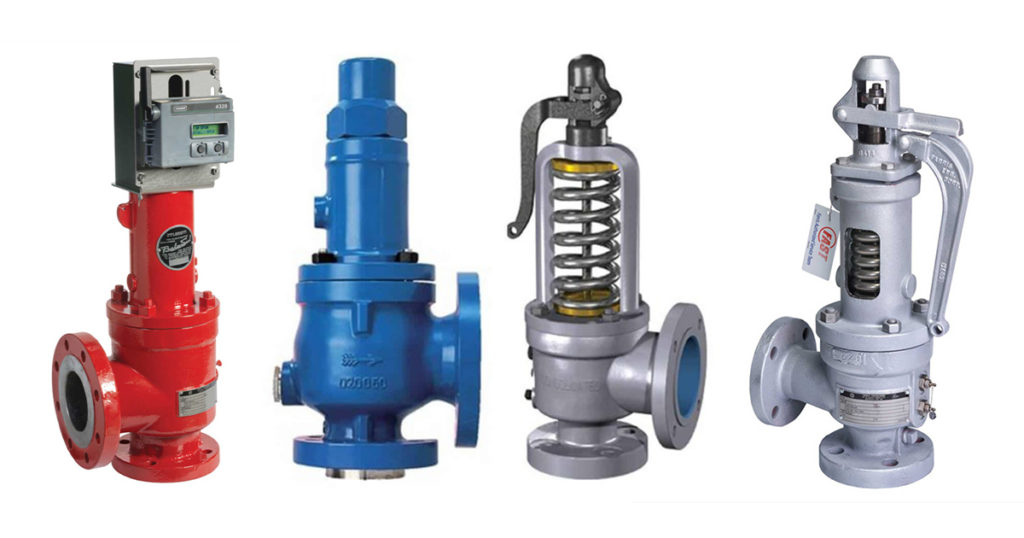Safety valves are critical safety components in industrial systems, designed to protect equipment and personnel from overpressure hazards through an automatic pressure relief mechanism. This article comprehensively explores the working principle of safety valves, different safety valve types, selection guidelines, and maintenance tips, aimed at providing thorough guidance for industrial safety.
Working Principle of Safety Valves
The design of safety valves is based on a simple yet powerful principle: when the pressure or temperature within the system exceeds a preset safety threshold, the valve automatically opens to release excess media, thereby reducing pressure. This automatic release mechanism is key to preventing potentially catastrophic accidents.
The Working Principle of Safety Valves Can Be Broken Down Into the Following Steps:
- Pressure Sensing: Safety valves are equipped with sensing elements that monitor pressure changes within the system in real-time.
- Valve Opening: Once pressure is detected above the set value, the valve quickly opens, allowing media to flow through.
- Pressure Relief: Media is released through the valve until the pressure within the system returns to a safe level.
- Valve Closing: After the pressure decreases, the valve automatically closes, preventing further leakage of media.
Types of Safety Valves
There are various types of safety valves, each suited for specific applications and operational requirements. Here are some common types:
- Spring-Loaded Safety Valve: This is the most commonly used type, which employs a spring to keep the valve closed. When system pressure exceeds the set threshold, the valve opens to release excess media, reducing pressure.
- Pilot-Operated Safety Valve: This type uses system pressure to seal the valve. It consists of a main valve and a pilot valve, with the pilot valve controlling the opening and closing of the main valve based on system pressure.
- Direct Acting Safety Valve: This safety valve operates most directly, requiring no external power source or control system. Pressure acts directly on the valve disc, and when pressure exceeds the resistance provided by the spring or weight, the valve opens to release pressure.
- Balanced Safety Valve: Designed for high backpressure systems, this safety valve maintains sealing by balancing the backpressure.
- Micro-Actuated Safety Valve: This type is designed for applications requiring precise control of pressure release, capable of opening and closing at very small pressure changes.
Selection Guidelines for Safety Valves
Choosing the right safety valve is crucial for ensuring the safety and efficiency of industrial systems. Key factors to consider when selecting safety valves include:
- Working Pressure and Temperature: The safety valve must withstand the maximum working pressure and temperature of the system.
- Type of Media: The materials and design of the safety valve must be suitable for the type of media in the system to prevent corrosion or chemical reactions.
- Discharge Capacity: The safety valve must be capable of handling the system’s maximum discharge capacity to ensure quick and effective pressure relief.
- Installation Location: The installation position of the safety valve should facilitate maintenance and inspection without affecting the overall layout of the system.
Maintenance Strategies for Safety Valves
Proper installation and maintenance of safety valves are crucial for their performance and reliability. Here are some key maintenance tips:
- Proper Installation Techniques: Ensure the safety valve is installed according to industry best practices and manufacturer guidelines to prevent system failures.
- Regular Maintenance: Conduct regular checks, cleaning, and replacement of worn parts to keep the safety valve in optimal condition.
- Rigorous Testing Procedures: Use advanced equipment to simulate operating conditions and verify valve performance, ensuring the safety valve operates correctly when needed.
- Recording and Monitoring: Document all maintenance activities and testing results to facilitate tracing and analysis in case of issues.
Fault Diagnosis and Troubleshooting for Safety Valves
Failures in safety valves can lead to serious safety incidents. Therefore, understanding common failure causes and troubleshooting methods is crucial. Here are some common failures and their diagnosis and troubleshooting methods:
- Valve Fails to Open: This may be caused by overly tight springs, blocked valve seats, or high fluid viscosity. Solutions include adjusting spring tension, cleaning the valve seat, or replacing the fluid.
- Valve Fails to Close: This could result from damaged valve seats, worn sealing surfaces, or media leaks. Solutions include replacing the valve seat, repairing sealing surfaces, or checking for media leaks.
- Valve Leakage: This may occur due to worn sealing surfaces, media corrosion, or improper installation. Solutions include replacing sealing surfaces, using corrosion-resistant materials, or reinstalling the valve.
Conclusion
Safety valves are essential components that protect industrial equipment and personnel from overpressure hazards. Their design allows for the release of gases, steam, or liquids to prevent excessive pressure buildup. Understanding the characteristics of different types of safety valves, along with selection guidelines and maintenance strategies, is vital for ensuring safety in industrial environments and maintaining system integrity. Implementing these strategies helps ensure that safety valves perform effectively and reliably, safeguarding both equipment and personnel.
